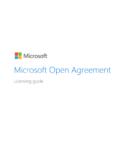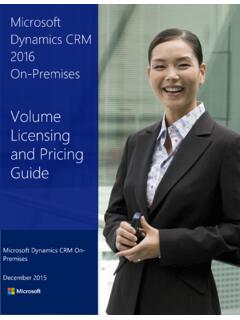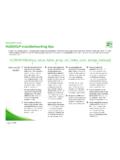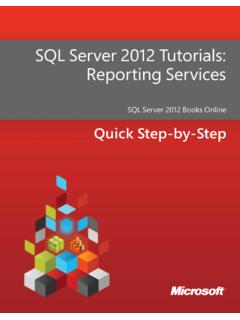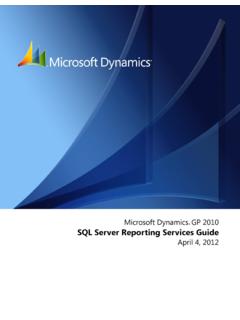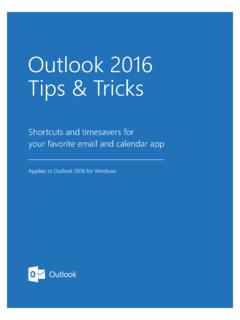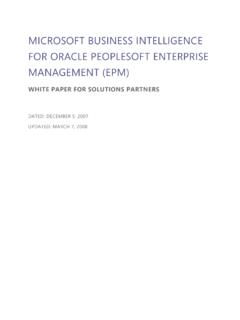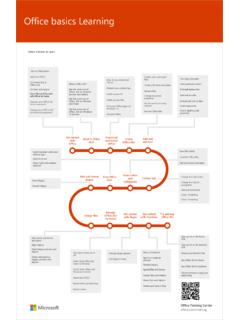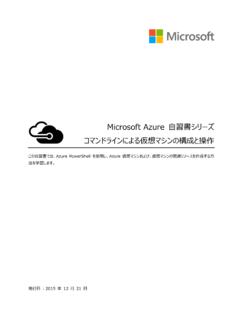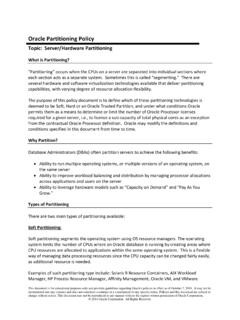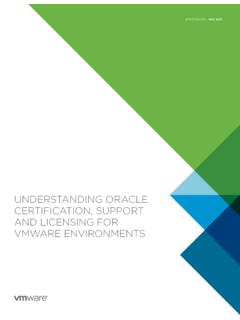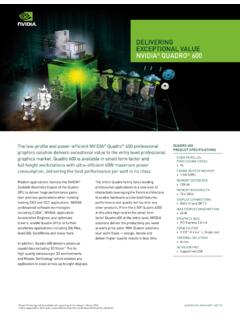Transcription of Introduction to Microsoft Core licensing
1 licensing brief October 2020. Introduction to Microsoft Core licensing models This brief applies to all Microsoft licensing programs. Contents Summary .. 1. Definitions .. 2. Introduction to Per Core licensing .. 4. Per Core licensing model .. 5. Per Core/CAL licensing model .. 5. Management Servers licensing model .. 6. SQL Server .. 7. SQL Server licensing options for highly virtualized environments .. 8. BizTalk 8. Per Core license model .. 9. BizTalk Server licensing options for highly virtualized environments .. 9. Windows Server .. 9. Minimum core license requirements for Standard and Datacenter Editions ..10. licensing Requirements of Additional OSEs for Standard Edition ..11. System Center ..11.
2 Minimum core license requirements for Standard and Datacenter Editions ..12. Additional resources .. 12. Summary The purpose of this brief is to introduce the basics of the different Per Core licensing models for key Microsoft server software products. October 2020 1. Introduction to Per Core licensing and Basic Definitions Definitions Assigning a license: Assigning a license means that you designate that license for one device or user. This designation avoids sharing a license across more than one device or user simultaneously. For example, after you have assigned a software license to a server, you are permitted to run the software on that server. You can use whatever manual or technical method that works for you to ensure that you have the correct number of licenses to cover your software use.
3 Figure 1: Assigning a license. Data center: A building (or multiple buildings) that houses servers and ancillary equipment typically used in a corporate computing environment connected by a local area network (LAN). Hardware thread: A hardware thread is either a physical core or a hyper-thread in a physical processor. Figure 2: Physical server showing physical processors, physical cores, and hardware threads. Instance: An instance of software is the set of files that make up the software, stored in executable form, and ready to run. You create an instance of software by executing the software's setup or install procedure, or by duplicating an existing instance. Instances of software can run on physical or virtual hardware systems.
4 Examples: An installed copy of the Windows Server operating system on a hard disk is an instance of Windows Server. An installed copy of Microsoft Exchange Server within a virtual hard drive (VHD) (or other image format) file is an instance of Exchange Server. A VHD file with Exchange Server installed on top of Windows Server contains an instance of Windows Server and an instance of Exchange Server. Copying that VHD file creates another instance of Windows Server and another instance of Exchange Server. Deploying that VHD file to another server creates an instance of Windows Server and an instance of Exchange Server on that server. October 2020 2. Introduction to Per Core licensing and Basic Definitions Run an Instance: You run an instance of software by loading it into memory and executing one or more of its instructions.
5 Once this has occurred, an instance is considered to be running (whether or not its instructions continue to execute) until it is removed from memory. Figure 3: Different types of servers. Operating system environment (OSE): all or part of an operating system instance, or all or part of a virtual (or otherwise emulated) operating system instance which enables separate machine identity (primary computer name or similar unique identifier) or separate administrative rights, and instances of applications, if any, configured to run on the operating system instance or parts identified above. There are two types of OSEs, physical and virtual. A. physical hardware system can have one physical OSE and/or one or more virtual OSEs.
6 Physical core: Each physical processor contains smaller processing units called physical cores. Some processors have two cores, some four, some six or eight, and so on. Physical OSE: An OSE that is configured to run directly on a physical hardware system. The operating system instance used to run hardware virtualization software (for example, Microsoft Hyper-V Server or similar technologies) or to provide hardware virtualization services (for example, Microsoft virtualization technology or similar technologies) is considered part of the physical OSE. Physical processor: A processor in a physical hardware system. Physical OSEs (see Operating System Environment (OSE) ) use physical processors. Server: A server is a physical hardware system capable of running server software.
7 A hardware partition or blade is considered to be a separate physical hardware system, and, therefore, a separate server. Server farm: A server farm consists of up to two data centers each physically located in the following areas: In a time zone that is within four hours of the local time zone of the other (Coordinated Universal Time [UTC] and not Daylight Saving Time [DST]), and/or Within the European Union (EU) and/or European Free Trade Association (EFTA). Each data center can be part of only one server farm. You can reassign a data center from one server farm to another, but not on a short-term basis (that is, not within 90 days of the last assignment). Service provider: A service provider is an organization that provides services, such as software or hosting services, to other organizations.
8 October 2020 3. Introduction to Per Core licensing and Basic Definitions Virtual core: The unit of processing power in a virtual (or otherwise emulated) hardware system. A virtual core is the virtual representation of one or more hardware threads. Virtual OSEs use one or more virtual cores. Figure 4: Virtual Machine (VM) using virtual cores. Virtual OSE: An OSE that is configured to run on a virtual (or otherwise emulated) hardware system. Introduction to Per Core licensing With the release of Microsoft SQL Server 2012, Microsoft server licensing shifted the measure of computing power from physical processors to cores. Core-based licensing provides a more precise measure of computing power and a more consistent licensing metric, regardless of whether solutions are deployed on physical servers on-premises, or in virtual or cloud environments.
9 Core-based licensing enables multi-cloud environments, improving workload portability and helping remove friction across different licensing models, making it easier for customers to migrate to the cloud at their own pace. Today, there are primarily three licensing models that apply Per Core licensing : 1) The Per Core model used by SQL Server and BizTalk Server. 2) The Per Core/CAL licensing model used by Windows Server (Standard and Datacenter edition) following the release of Windows Server 2016. 3) The Management Servers (core-based) licensing model used by System Center (Standard and Datacenter edition) following the release of System Center 2016. October 2020 4. Introduction to Per Core licensing and Basic Definitions Per Core licensing model There are two ways to license the Per Core licensing model: licensing by Physical Core on a Server licensing by Individual Virtual OSE.
10 The number of core licenses needed depends on whether customers are licensing by Physical Core on a Server or by Individual Virtual OSE. licensing by Physical Core on a Server When running an instance of the software in a physical OSE, all physical cores on the server must be licensed. Software partitioning or custom system bios control does not reduce the number of core licenses required, except when licensing individual virtual machines (VMs). A minimum of four core licenses is required for each physical processor on the server. Unlike the Server+CAL licensing model, the Per Core model allows access for an unlimited number of users or devices to connect from either inside or outside an organization's firewall.
